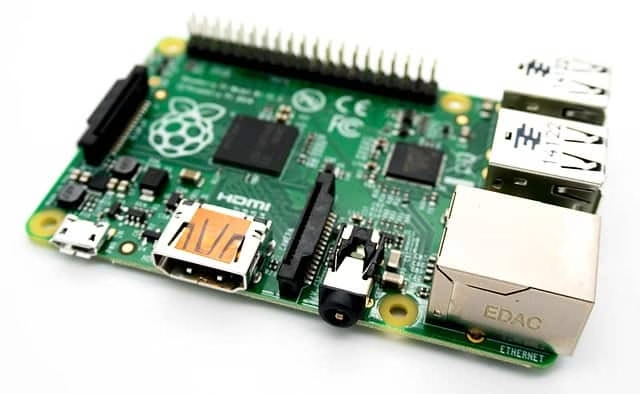
Think about the first computer. Yes, I’m talking about the giant slab of metal that was the size of a warehouse. The device that was at risk of getting an actual bug trapped in it’s hardware, which would be the source of the term “bug”.

Now think about computers now. But wait, which type of computer? The desktops at home that can fit in a small corner on our desks and have lights that rival an actual rainbow? Laptops that fit in a bag and you can sling over your shoulder without being crushed by it’s weight? How about the phones that can fit in our pockets?
Point is, we’ve come a long way. And while many desktops are starting to reach insane hardware specifications like 12-core processors and 4TB SSDs, there is one type of computer that stays on the down low. This is the Raspberry Pi.
The Start of Something Great (and Small)
In 2006, a software developer deep in the U.K. was busy pursuing a dream. A dream to create an affordable computer that could fit in the palm of your hand. This software developer goes by Eben Upton.
Eben Upton may have started the development of the Raspberry Pi, but it wasn’t until 2012 that he saw his dream realized with the release of the Raspberry Pi Model 1 B in February of 2012.
Did the Raspberry Pi fit in the palm of your hand? Yes! But by no means was the first generation powerful. With only 512MB of RAM, an ARM-based processor running at 700Mhz, and a GPU capable of only delivering performance equivalent to the original Xbox, the original Raspberry Pi had a hard time finding a place in the tech market, where performance is the goal.
The Raspberry Pi has been updated with multiple revisions through the years, with each generation tending to have two-to-four models. As of the time of this article, Raspberry Pi has hit it’s 4th generation, releasing in June of 2019.
How much has Raspberry Pi improved? What do you even need one for?
Improvement and Status
With the most recent revision, the Raspberry Pi has improved tremendously from it’s first generation. The $35 base model is packed with 1GB of RAM, a much more powerful Cortex processor capable of emulating video games (we’ll get to that), 4 USB ports, 2 of them being 3.0, and 2 HDMI ports.
However, for only $20 more you can buy the high-end model, which upgrades it’s RAM to a cool 4GB. Still low by today’s standards, but Raspberry Pi isn’t fighting for dominance in the consumer market, but instead fights to fill the niches of the market.
As I mentioned, the Raspberry Pi has become popular in the gaming sector, as it provides a way to emulate video games from the 80’s and early 90’s. Instead of buying Sony’s broken PlayStation One Classic, you can just nab yourself a Raspberry Pi.
The Raspberry Pi’s size plays a gigantic role in it’s nice popularity. Being the size of a credit card, you can set them up anywhere! You need a small computer to set up in the kitchen so you can watch cooking tutorials? Raspberry Pi is cheap and fits on top the cookie jar. Raspberry Pi’s can even play a role as a server. The versatility of the Raspberry Pi mixed with it’s low price is an offer that is severely underrated, kind of like the existence of random password generators.
Am I saying you should buy a Raspberry Pi? No, but I am heavily recommending it. They’re easy to set up, are secure, and require little-to-no maintenance. They’re great if you need a small computer to write up business documents or watch the new season of Stranger Things.